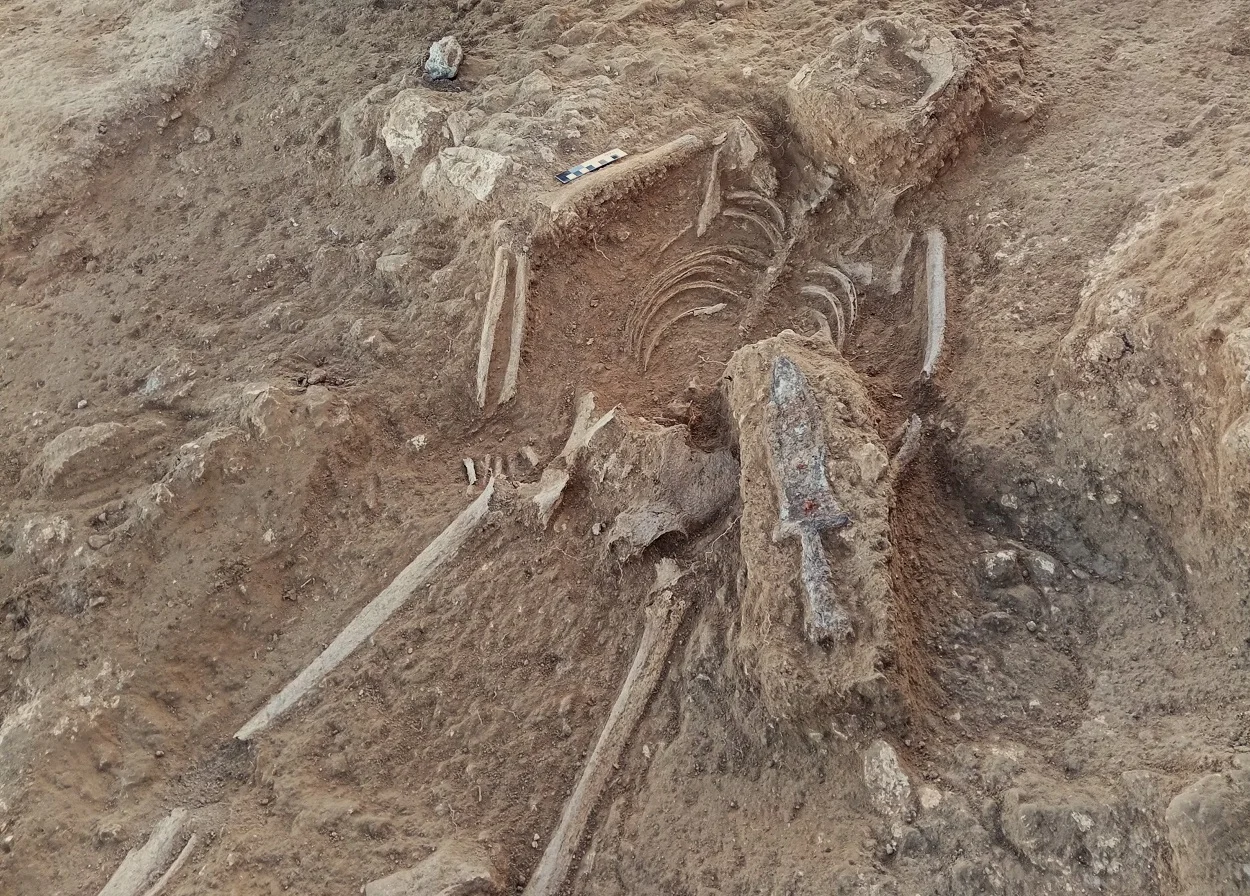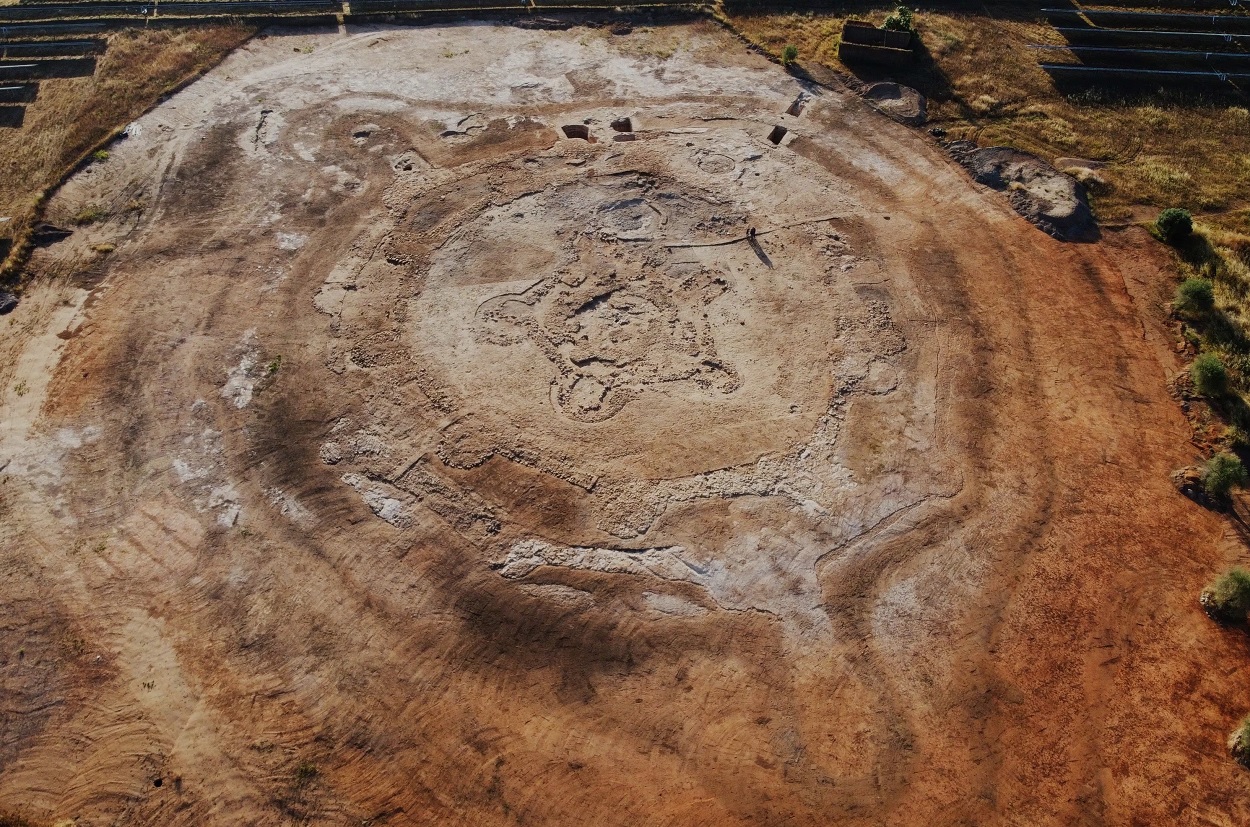Excavations at Cortijo Lobato, conducted during the construction of a new photovoltaic park, have revealed the skeletal remains of a man buried with a pugio (a Roman dagger) placed on his back.
Cortijo Lobato is a fortified settlement near Almendralejo, in Spain’s Extremadura region. The site dates from the 3rd millennium BC, with traces of human activity extending until the 5th century AD.
The site was first identified during preliminary surveys in 2021. Archaeologists from TERA S.L were commissioned to investigate further, uncovering an enclosure with three concentric walls, four rock-cut moats, and fortress walls stretching for 550 metres with 25 defensive towers.
According to ACCIONA who constructed the park, the fortress was likely built to protect crops during a severe drought that severely limited agricultural production. The fortress was abandoned around 2450 BC and remained mostly uninhabited until the Roman Imperial period.

The archaeologists also unearthed Copper Age objects, such as arrowheads, axes, plates, bowls, and loom weights, but the most intriguing discovery was the skeletal remains of a man buried with a Roman dagger called a pugio.
A pugio was an auxiliary weapon used as a sidearm by Roman soldiers. According to experts, the dagger and burial dates from the 2nd to 3rd century AD, a period when the Legio VII Gemina was the only Roman legion stationed in Hispania.
The man was buried face down in a shallow grave, with his feet seemingly cut off—an act that archaeologists speculate may signify dishonour. With the addition of the pugio, it is suggested that he might have been a legionnaire that faced the fustuarium, a severe form of military discipline for deserters and for stealing from one’s fellow soldiers.
Header Image Credit : ACCIONA
Sources : ACCIONA







